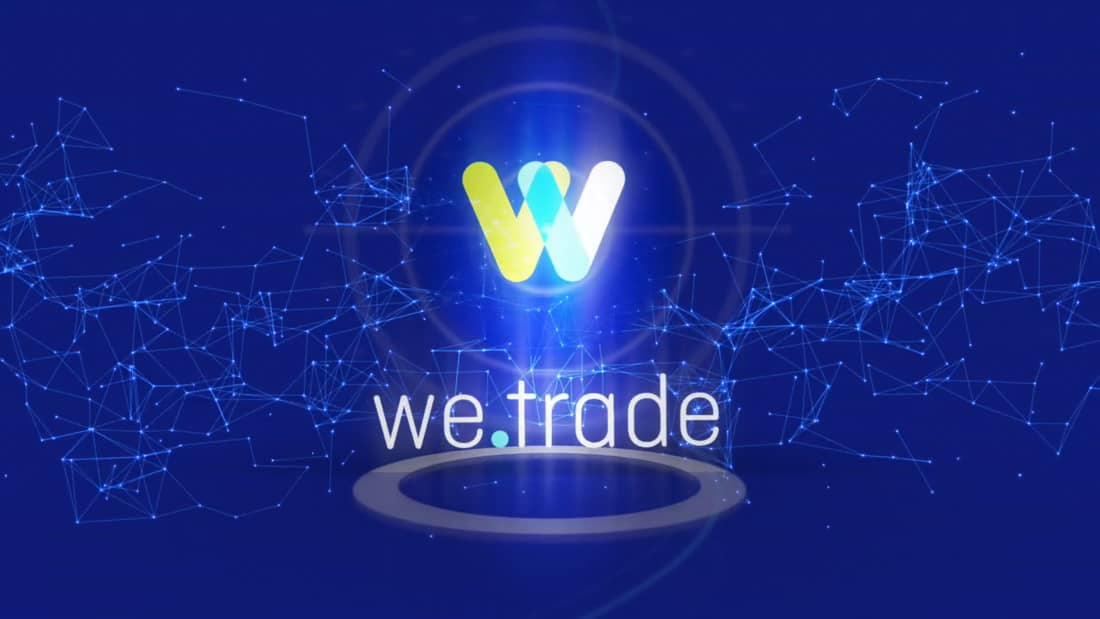
“Collaboration at its Finest”: How the we.trade Platform is Transforming the Way in Which Banks Think About Blockchain
Industry discussions about blockchain can often seemingly go in one of two directions: down a rabbit hole of esoteric industry jargon about “miners”, “sharders” and “blobbers” – with perhaps a large side order of debate about cryptographic hash functions – or into volatile, speculative orbit with the industry’s 1,600+ cryptocurrencies. Amid the confusion and noise, what gets lost are the real-world business applications of a consensus-based, sequenced, tamper-resistant record of transactions; precisely the things that inspired excitement about this transformative technology to start with.
we.trade: Confounding Sceptics?
The we.trade platform is among the real world examples of blockchain being put to work in a pioneering commercial way. It has attracted industry heavyweights from across the financial services sector, with its ability to smooth out pan-European trade.
Initially conceived in January 2017 and then known as the Digital Trade Chain, the platform uses smart contracts to launch and administer agreements between banks and clients; a consensus-based, encrypted digital ledger lets both sides verify a transaction and ensure that terms of the contract have been adhered to before payment.
(The nine founding members of the platform, which allows users to manage, track and protect open account trade transactions between SMEs, are Deutsche Bank, HSBC, KBC, Natixis, Nordea, Rabobank, Santander, Société Générale and UniCredit.)
More Announcements Pending…
Just weeks after we.trade’s June 2018 launch, ten companies used four banks on the platform to conduct the first commercially viable open account trades based on blockchain technology, and interest in participation is growing fast.
As the we.trade platform’s IT vendor, IBM has been central to driving and delivering the project – one of many real world arenas in which IBM is putting blockchain to use; the company proving surprisingly nimble in pioneering applications for the technology, having already engaged with clients in over 400 blockchain projects across supply chain, financial services, government, healthcare, travel and transportation, insurance, chemicals and petroleum and more.
See also: IBM Brings Blockchain to “Antiquated” Insurance Compliance
Now, three months after its launch, IBM is gearing up to announce some significant complementary offerings to we.trade at the annual Sibos banking and finance conference, which kicks off on October 22 in Sydney in front of more than 8,000 industry watchers.
While the company was reluctant to disclose details ahead of the event, Parm S. SanghaExecutive Partner GBS Blockchain Leader told Computer Business Review that one thing is abundantly clear: “The business proposition for increased cross-border trade with lower process friction, risk and cost is being quickly understood by the financial services industry as a means by which to generate new fee income. Together with further collaboration across the value chain and connecting other network service providers, the opportunity to create new eco-systems for greater trade services is making this space even more compelling. Blockchain and Fabric are just the means by which this is delivered.”
He added: “We have had a lot of interest from European banks in joining the first trade finance blockchain network in production, and in collaboration with we.trade, hope to announce new banks joining the network in the very near future.”
What is the Business Proposition Exactly?
As Jerry Cuomo, IBM’s Vice President for Blockchain Technologies recently put it in testimony to the US House Committee on Science, Space and Technology. “There are three main [benefits to blockchain]: 1) Time is saved because multi-party transactions can settle immediately, avoiding exhaustive reconciliation that often takes days or even months. 2) Cost is reduced because business-to-business processing eliminates overhead caused by “middle-men”. 3) Risk is mitigated because the ledger acts as an immutable audit trail greatly reducing the chances for tampering and collusion. “
When launching we.trade, the consortium evaluated multiple combinations of technologies and delivery organisations as part of their RFP process. IBM bid a combination of Hyperledger Fabric, Hyperledger Composer and IBM Blockchain Platform, which was ultimately selected by the banks as not only the most mature, complete and cost effective – but also owing to the fact that IBM has a heritage of deploying global projects in industries requiring alignment to complex regulations.
IBM Blockchain Platform
Under a simple “starter plan” to its IBM Blockchain Platform, the company now offers one-click setup that allows for rolling migrations to blockchain with no network outages, all Hyperledger Fabric features and capabilities, the ability to deploy and run apps created w/Hyperledger Composer, industry code samples and more.
At Sibos, it looks likely that more than a few financial services industry players will be rolling their fingers over the “purchase now” button; with the case studies beginning to role in and business proposition increasingly clear, nobody, after all, wants to get left behind.
For more on how IBM is revolutionising Financial services with Blockchain, click here
